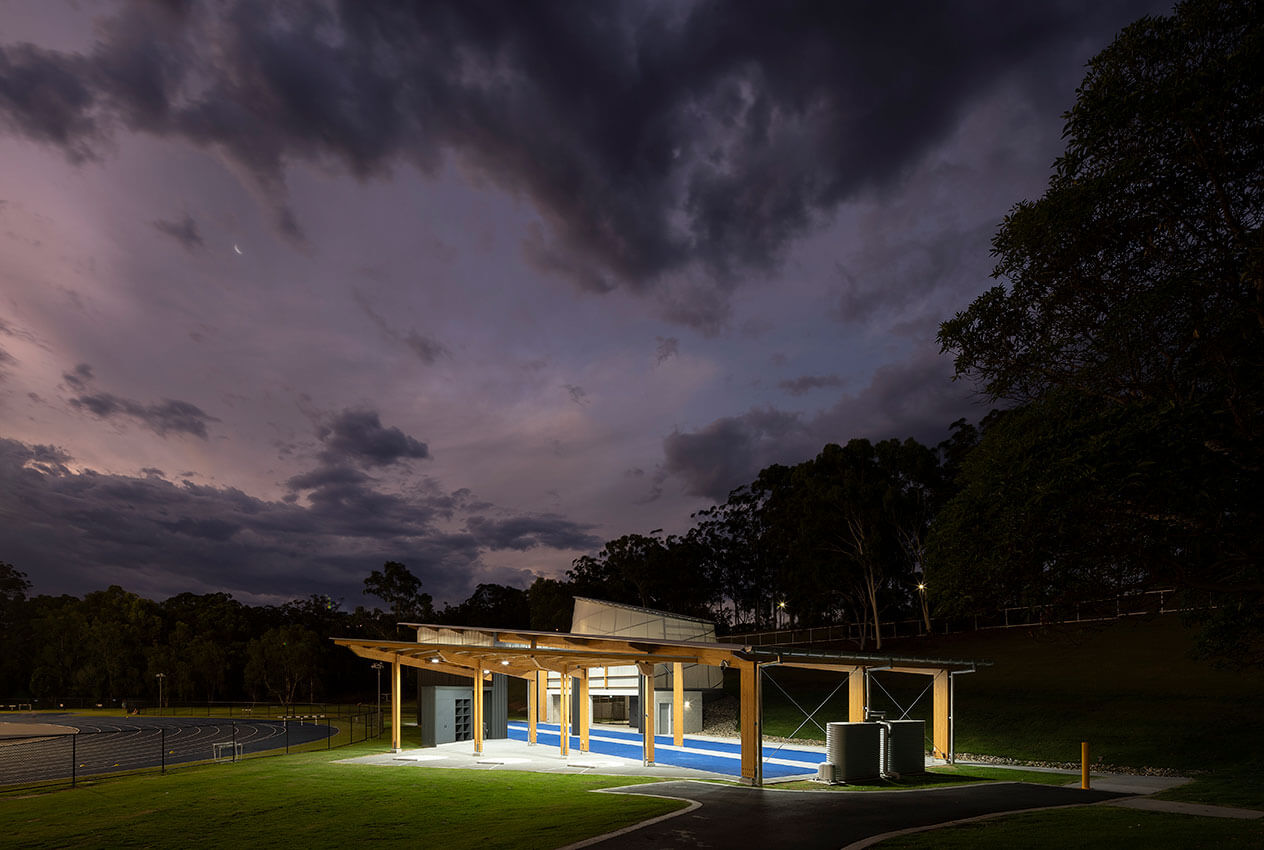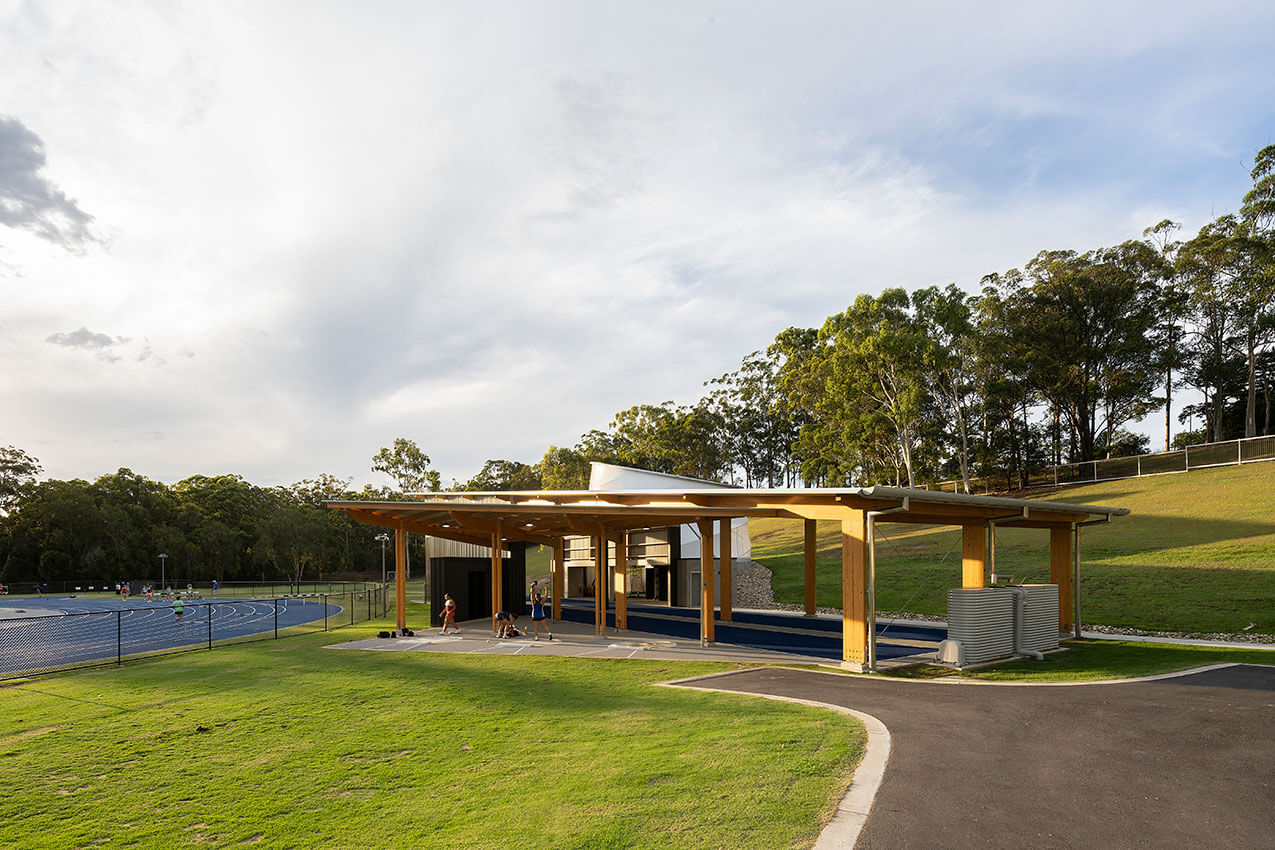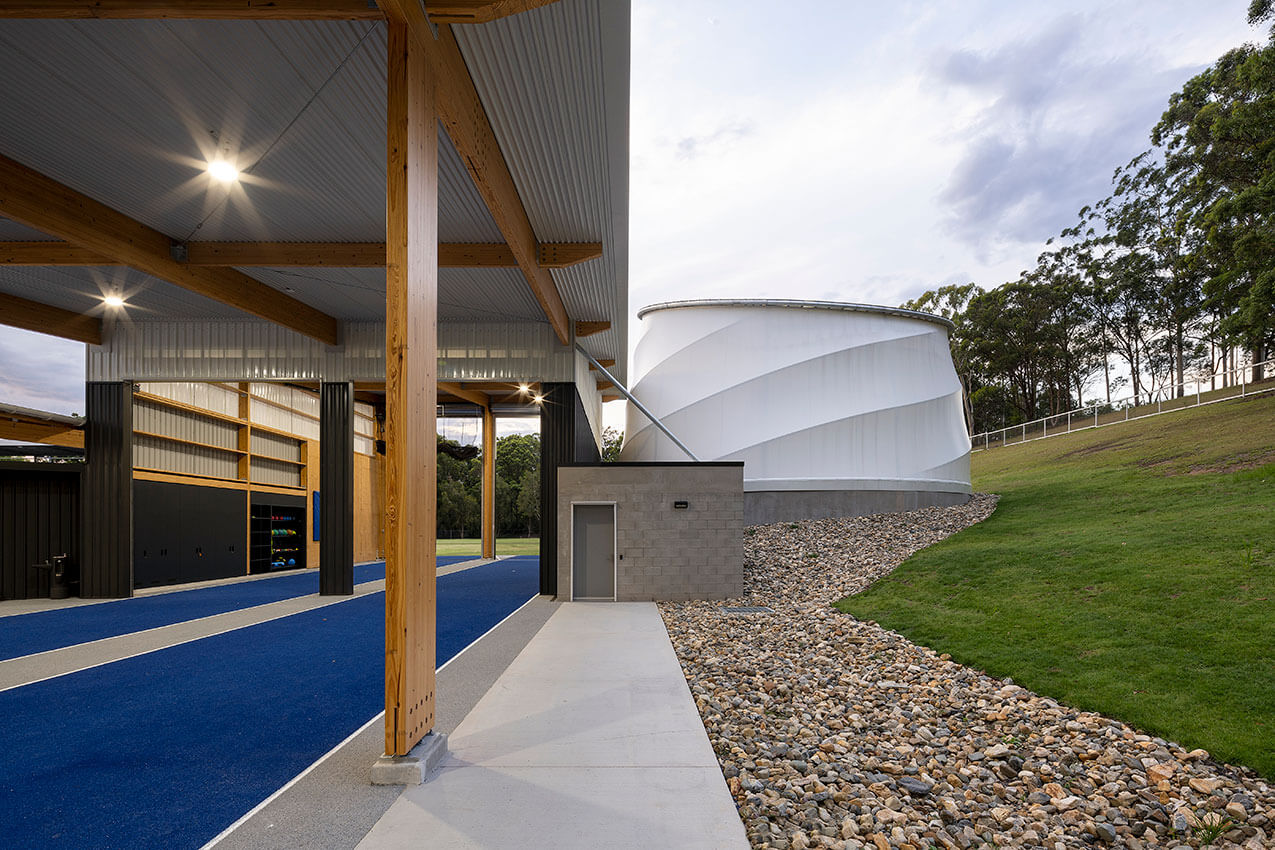National Throws Centre of Excellence | Phillips Smith Conwell

2023 National Architecture Awards Program
National Throws Centre of Excellence | Phillips Smith Conwell
Traditional Land Owners
Year
Chapter
Queensland
Region
Brisbane
Category
Small Project Architecture
Builder
Photographer
Project summary
The Throws Pavilion at QSAC, delivers a sustainable, zero-carbon outcome that ensures elite Commonwealth and Olympic level athletes and para-athletes can train in sub-tropical climate conditions year-round in preparation for the 2032 Brisbane Olympics.
The design was strongly influenced by an athlete’s sporting function, connecting movement with structure and built form to deliver a state-of-the-art training facility that is one of a kind in the southern hemisphere.
With such distinctive yet related functional ‘throws’ sports including javelin, shot-put, discuss and hammer, three distinct building shapes were created: a strip for the javelin linear runup and throw; a cone for the helical spin of the discus and hammer; and a flat plane for the push of the shot-put.
The enthusiastic input from a collaborative team of expert designers, engineers and makers has resulted in a building that will impact several generations of athletes coming through Queensland Academy of Sport.
2023
Queensland Architecture Awards Accolades
Queensland Jury Citation
The National Throws Centre of Excellence is an innovative, specialist training facility for discus, shot put, javelin, and hammer throw. The modestly scaled facility sits comfortably in the landscape with its simple yet striking assemblage of forms against a backdrop of forest and rising terrain.
Site planning incorporates three interlocking zones defined by the arcs and trajectories of distinct ‘throw’ techniques: run, push, and spin. These physical actions were distilled and celebrated as design cues. A helical tensile fabric structure rises dynamically, reflecting the spin action of discus and hammer throw.
This anchors the facility in the terrain and provides a fulcrum for the twin axes of shotput and javelin. The use of glulam timber construction, low-carbon concrete, and open, natural ventilation were deliberate choices to minimise environmental impact.
Aspiring to achieve zero-carbon certification in 2023, this building serves as an inspiring test case for the economical delivery of sustainable sporting facilities in line with the Queensland Government’s commitment to climate positive Olympic and Paralympic Games in 2032. Both delightful and practical, this building will nurture generations of Australian athletes.
The National Throws Centre of Excellence is a high-tech, high-performance training centre that will help Queensland and Australian stars of discus, shot put, javelin, hammer throw, decathlon and heptathlon achieve international success.
The (carbon neutral) facility, funded through the Queensland Government, QAS, Athletics Australia and the AIS with support from Stadiums Queensland, provides consistent conditions for throws athletes to train no matter the weather conditions.
As the QAS looks towards Paris, LA and Brisbane 2032, it is critical that we provide high-tech, world-class, high-performance environments for athletes to train and we are delighted to have this centre open for business.
Client perspective
Project Practice Team
Alan Harper, Architectural Technician
Andrew Caldwell, Project Architect
Justin Palmer, Architectural Technician
Luke Cox, Architectural visualisation
Nick Tan, Graduate of Architecture
Sergio Sarri, Principal Architect
Simon Tanner, Architectural Technician
Warwick Allen, Architectural Technician
Project Consultant and Construction Team
Bennett and Francis, Surveyor
Bligh Tanner, Civil Consultant
Bligh Tanner, Structural Engineer
BRW Hydraulics, Hydraulic Consultant
Construction Sciences, Geotechnical
Fabritecture, Fabric structure design and install
PE Consulting Engineers, Electrical Consultant
Playhard, Sports equipment
Steve Bartley and Associates, Building Surveyor
WSP, Embodied carbon assessment
XLam, Timber structure fabrication documentation and supply
Connect with Phillips Smith Conwell









